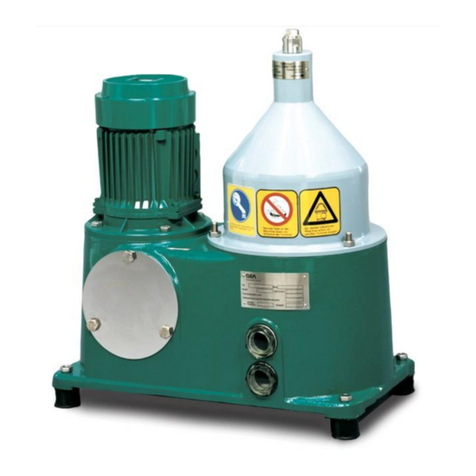
In its standard version, the FLOWVENT Control Top fulfils the requirements of
protection class IP66 and IP67 (DIN EN 60529).
IP classes provide information about the degree of protection an electrical device
housing provides against the ingress of solids (first digit) or humidity (second
digit). They attempt to reproduce common kinds of failure and assign so-called IP
codes to the protected systems. The letters IP stand for 'International Protection'
and are prefixed to the code numbers.
First digit * Meaning
ISO 20653 DIN EN 60529 Protection against contact Protection against solids
6k 6 Complete contact protection Complete protection against dust
ingression (dustproof)
Second digit * Meaning
ISO 20653 DIN EN 60529 Protection against humidity
5 5 Protected against water jet (nozzle) from any angle
6 6 Protected against powerful water jets
6k Protected against powerful water jets under increased pressure
7 7 Protected against temporary immersion
9 Protected against high pressure spray downs
9k Protected against high pressure spray downs
* For additional digits and more detailed descriptions please refer to the pertinent standard.
Digits not to be mentioned can be replaced by the letter x (e. g. IPx6).
Concerning the ingress of humidity, IPx6 includes all lower IP classes. This is,
however, not the case for the higher protection class IPx7!
When detergents with high surface tension reduction and/or when using high-
pressure cleaners are used, we recommend the use of devices of protection
class IP69k. If this protection class is necessary, a T.VIS® control top or a
position indicator must be purchased and used.
Hint!
The specified protection classes only apply if the connectors are used
for their intended use, if the cable gland is properly sealed and if the
control top is fitted on the valve, see Chapter 6, Page 35.
2.5 General safety instructions and dangers
The component is safe to operate. It was built according to state-of-the-art
science and technology.
Nevertheless, dangers can arise from the component, if:
•the component is not used as intended
•the component is used improperly
•the component is operated under impermissible conditions
2.5.1 Principles for safe operation
Dangerous situations during operation can be avoided by safety-conscious and
proactive behaviour of the staff.
Safety
General safety instructions and dangers
430BAL014912EN_3
25.01.2024 9




























